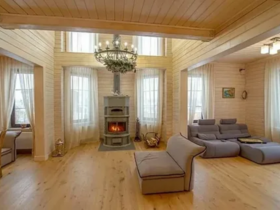To correctly protect the house from ground and wastewater, it is important to know what can be drainage for your land plot. It is also necessary to choose the most suitable method of work. You will learn more from the material of the article.
Why and in what cases it is necessary to install drainage?
A set of works on the organization of drainage
Drainage laying is carried out when it is necessary to ensure the outflow of water from the land (summer cottage). This is necessary in order to protect the base of the house. Thanks to this system, moisture does not penetrate the basements and decreases the pressure of groundwater (GV) for the entire structure as a whole (that is, the foundation is not destroyed). Drainage also helps prevent “drowning” and rotting of plants on the land plot. This system is mounted by arranging special channels, pipes and wells. Only before direct styling is it important to clarify how much drainage is needed in your site? Is there a need for him? To do this, you need to pay attention to the following points:
If the basements, communication channels, intra -quarter collectors are located in loamy and clay soils, then the installation of drainage is necessarily done.
It is also equipped if technical structures or basements are 0.5 meters lower or higher than groundwater level.
In the event that technical undergrounds or basements are located at a distance of more than 1.4 meters from loamy and clay soils.
If the problem is only with wastewater, then you can equip the sewer of the rain. One way or another, in order to put an objective assessment in the need for a drainage system, it is important to call the relevant specialists who will conduct research using devices. If you want to save, then just ask your neighbors — do they have drainage? What is UGV and T. D. It is only worthwhile to understand that in the second option, all inaccuracies and errors when drawing up data will lie on your shoulders.
Types of structures — open and closed installation method
Installation of surface drainage systems
Drainage is laid in two popular ways — open and closed. The first method implies laying open trenches throughout the territory. They, in turn, are displayed in a common grath ditch. The depth of drainage channels should not be more than 60 centimeters, and the width is 50 centimeters. This type of system is well suited for areas located on the slope of the mountain or hill. Of the minuses, rapid overgrowing and clogging of drainage can be distinguished, as well as an unpresentable appearance. True, there is also a logging drainage arrangement (it is only appropriate on small land plots). From problems, you can distinguish the same — quick clogging.
Closed method involves the installation of pipes underground. For this, ditches are specially dug to a depth of about 90-150 centimeters with a slope towards a well or a natural drain. A gravel-sand pillow is without fail to fall asleep at the bottom of the trenches. Responsible areas in the system are often equipped with viewing wells. If we talk about which of the two systems is the most popular (open or closed), then it all depends on the features of the land plot. That is why before installation it is necessary to analyze the soil and UGV.
Features of closed type drainage
Before proceeding with installation, it is important to know the type of soil and groundwater level (UGV). The position of the land plot is also determined. For these tasks, hydraulic technologists or topographers-geodezists are specially invited. They make up the site diagram and carry out a number of necessary measures. Upon completion of work, experts give recommendations for the installation of a particular drainage system. But, as already mentioned, you can learn the information from the neighbors. Thus, you will significantly save on services. Only in case of an unpleasant situation, you will have to bear responsibility.
After the scheme is ready, it is desirable to duplicate it on the ground. Next, they begin to dig out ditches (trenches). Their depth is determined depending on the waterboat. A gravel-sand pillow is laid on the bottom of the ditch, then the pipes are mounted. The system is sprinkled with gravel on top and geotextiles are laid. Then fall asleep sand and lay sod. As it would seem, the drainage system is ready and can be operated for many years. But for its competent work, it is important to control drainage using specially equipped wells (otherwise they are called observation).
You can equip drainage yourself and using specialists. In the second case, the quality work of the system is guaranteed. You just need to check the system during the year.













Оставить коммент.